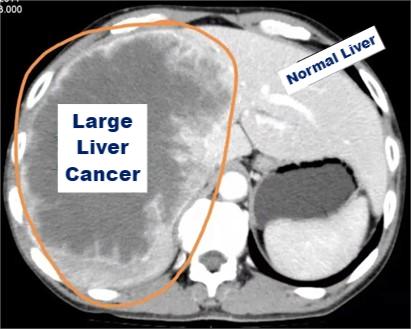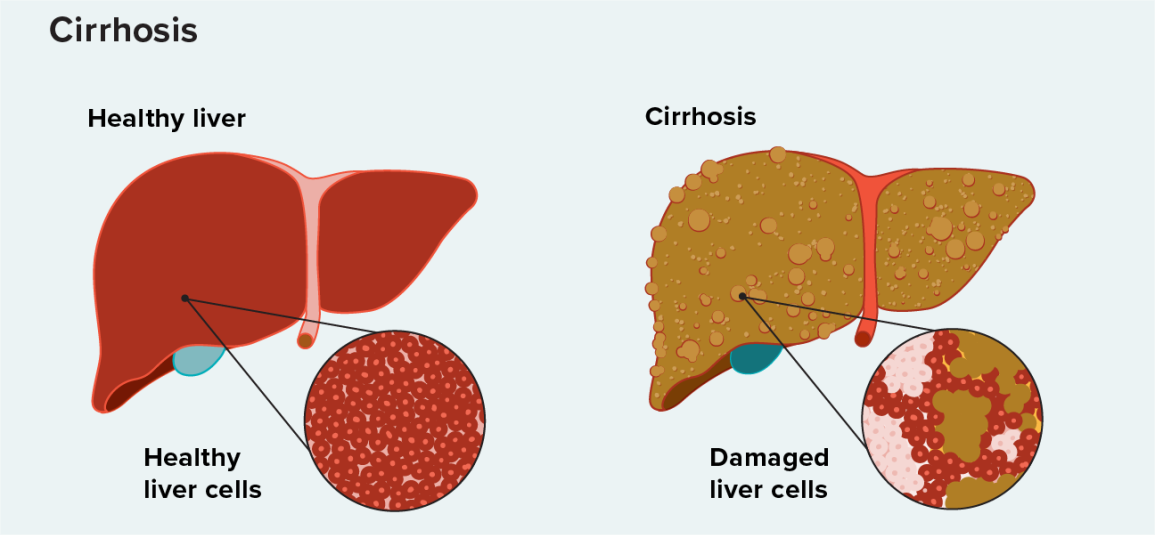What is the relationship between liver cancer and hepatitis B virus infection?
Although the occurrence of liver cancer involves multiple factors, the primary carcinogenic factor is viral hepatitis. Other carcinogenic factors include alcoholic fatty liver and consumption of food contaminated with aflatoxin. Epidemiological data indicate that areas with a high prevalence of hepatitis B coincide with regions of high liver cancer incidence. Individuals who have had hepatitis B are at a much higher risk of developing liver cancer, about ten times more than those who have not had hepatitis B. This underscores the fact that viral hepatitis, especially hepatitis B caused by the hepatitis B virus, is indeed the primary carcinogenic factor for liver cancer.

Life-threatening large liver cancers can be caused by minute hepatitis B viruses
How does the hepatitis B virus harm the liver?
The hepatitis B virus is a "liver-loving" virus. After invading the body, it travels through the bloodstream to its favored "nest" – the liver – where it turns individual liver cells into "virus factories," replicating wildly from one to many. The affected liver cells are destroyed, releasing more viruses to infect other liver cells, perpetuating the cycle of replication and damage, continually enlarging the liver's injury. Viruses released into the bloodstream can also become sources of infection, endangering close contacts. If the infection with the hepatitis B virus is relatively low and the immune function is intact, it may not cause significant damage. However, if there is a high viral load and a strong immune response, it can lead to severe acute hepatitis, endangering life. Prolonged adhesion of the virus to the immune system can lead to a state of chronic hepatitis, continuous damage and restructuring of the liver structure, leading to fibrosis and eventually developing into cirrhosis. On the basis of cirrhosis, it can further lead to the occurrence of liver cancer.


Continuous destruction by hepatitis viruses can lead to cirrhosis
How is the hepatitis B virus transmitted?
The infectivity of the hepatitis B virus is far less than that of the coronavirus, and it is difficult to contract through daily contact. The transmission routes of the hepatitis B virus are roughly three: first, mother-to-child transmission, also known as vertical transmission, where the mother infects the fetus in her body; second, sexual transmission, through multiple sexual partners, homosexual intercourse, and unsafe sexual activity; third, blood transmission, through bleeding from damaged skin or mucous membranes, or unsafe blood transfusions. Eating together with family members or working together with colleagues generally does not lead to transmission, but it is advisable not to share personal items such as toothbrushes, razors, towels, etc., to prevent transmission through bleeding gums, skin mucosal wounds, etc.
How to prevent the occurrence of hepatitis B?
Avoiding unsafe sexual behavior and not sharing personal items are the first things to consider because cutting off the transmission route is the key to preventing all infectious diseases. For hepatitis B, there is a more proactive prevention measure, which is to get vaccinated against hepatitis. For normal individuals who have not been infected with the hepatitis B virus, three doses of hepatitis B vaccine administered at 0, 1, and 6 months can effectively provide protection. As time passes, the titer of protective antibodies may gradually decrease or even become negative, weakening the protective effect, requiring another dose of hepatitis B vaccine.


Vaccination against hepatitis B is worth promoting
How to prevent hepatitis B from progressing to liver cancer?
As mentioned earlier, effectively preventing the occurrence of hepatitis is an important measure to prevent liver cancer. Once unfortunately infected with hepatitis B, active discussion on antiviral treatment should be initiated to strive to promptly eliminate the hepatitis B virus. Antiviral therapy is the fundamental treatment for chronic hepatitis B, and several drugs are currently available for selection. Specific treatment principles and methods can be found in medical guidelines and expert consensus, which will not be reiterated here. It needs to be pointed out that antiviral therapy for hepatitis B must be followed under medical guidance and often requires a long course of treatment, and discontinuation of medication should not be done arbitrarily. Otherwise, not only will it not suppress the hepatitis B virus, but it may also accelerate drug resistance and even promote viral replication rebound, worsening the condition.
